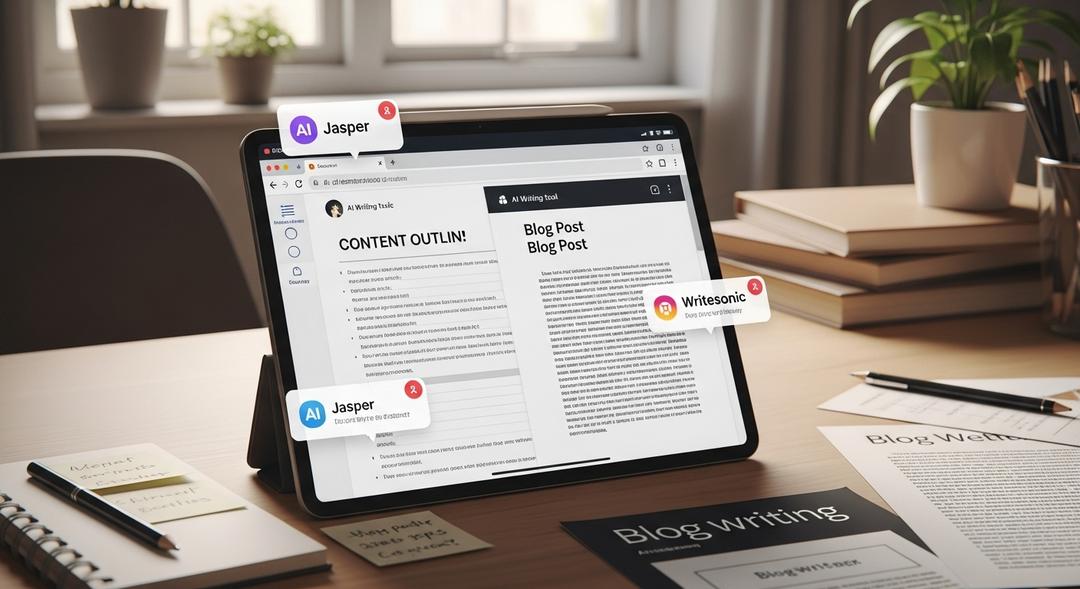Text to speech tools have transformed how people and organizations approach written material. By turning text into lifelike audio, these platforms have broken accessibility barriers while streamlining information flow for users in many industries.
Whether you want to improve educational content or make content production faster, top text to speech generators deliver distinct features tailored for a range of needs. With so many choices, picking the perfect solution comes down to matching your preferences and objectives.
What are the benefits for using Text to Speech AI Tools
Text to speech generators provide several advantages that benefit users across different sectors.
- Accessibility: Makes text-based information usable for those who are visually impaired or have reading challenges.
- Productivity: Lets people listen to content hands-free so they can multitask or consume information while engaged with other activities.
- Content Versatility: Enables effortless creation of voice-overs, eLearning modules, podcasts, or presentations directly from text files.
1. ElevenLabs
Features
- Highly accurate voice cloning for natural-sounding audio.
- Support for 20+ languages and multiple accents.
- Diverse customization for tone, pitch, and style.
- Straightforward interface with web and API access.
Pros
- Realistic vocal quality great for audiobooks and narration.
- Lightning-fast audio generation from scripts.
- Advanced data privacy options for organizations.
- Continuous updates and expansion of voice library.
Cons
- Full feature access limited to higher-paid subscriptions.
- API use can require technical skills.
- Some regional voices are less developed.
Pricing: ElevenLabs offers a restricted free plan, with competitive paid subscriptions and scalable API pricing for developers.
2. Play.ht
Features
- Access to numerous premium voices from top global providers.
- Immediate voice conversion and downloads.
- Export options in MP3, WAV, and other popular formats.
- Fine controls for adjusting pronunciation and stress.
Pros
- User-friendly site for rapid audio creation.
- Range of voice options for languages and accents.
- Team projects possible with shared workspace.
Cons
- Character usage caps on lower price tiers.
- Premium voices reserved for business customers.
- More limited editing than what the advanced audio editing tools provide.
Pricing: Play.ht has a free trial and affordable subscriptions, which vary based on your monthly audio needs.
3. Lovo.ai
Features
- Expansive library of over 500 voices and languages.
- Personal voice cloning for a unique audio experience.
- Drag-and-drop editor allows intuitive audio assembly.
- Exports available in crisp, high-quality formats.
Pros
- Diverse voices for commercial and educational content.
- Easy interface suitable for first-time users.
- Great vocal nuance and expression.
Cons
- Large-scale projects can result in higher prices.
- Advanced features may require subscription upgrades.
- Restrictions on voice cloning based on plan level.
Pricing: Lovo.ai gives a limited free version and paid packages, with special plans for enterprise needs.
4. TTSMaker
Features
- Variety of voices and languages for text-to-audio output.
- Allows bulk conversion with unlimited character input.
- Streamlined, ad-free interface enhances productivity.
- Direct download in all standard audio file formats.
Pros
- Zero-cost use, completely open without registration.
- No daily or monthly usage restrictions.
- Quick and responsive generation of speech files.
Cons
- Voice modification options are limited.
- Fewer advanced customization features than competitors.
Pricing: TTSMaker remains fully free for business and personal projects.
5. Podcastle
Features
- Comprehensive suite for recording, editing, and text to voice tasks.
- Large selection of digital voices tailored for podcasting.
- Tools for transcribing and enhancing audio quality.
- Facilitates smooth collaboration and sharing among teams.
Pros
- Ideal platform for podcasters and digital content makers.
- Streamlined switching between creation and editing tools.
- Delivers crisp audio with clear speech and background elements.
Cons
- Some features require higher-tier payment plans.
- May offer more than is needed for basic text to audio conversion.
- Registration needed to unlock most functionalities.
Pricing: Podcastle includes a no-cost plan for basic functions, while subscription plans add advanced features for growth.
6. Amazon Polly
Features
- Lifelike audio in numerous languages and regional accents.
- Compatible with SSML for customized speech control.
- Integrates easily with AWS tools and suite.
- Choices for streaming and file-based audio output.
Pros
- Handles large-scale audio creation effortlessly.
- Cost-effective pay-as-you-go system.
- Consistent updates and support through AWS.
Cons
- AWS account setup required.
- Initial learning curve for new users.
- Technical customization may need extra expertise.
Pricing: Free up to a certain limit for the first year and then priced by character output.
7. MURF
Features
- End-to-end studio for creating varied voiceovers.
- Grammar correction tools for scripts.
- Importing background music or sound effects.
- Synchronizing voice with video or visual presentations.
Pros
- Professional-level voice customization features.
- Well-suited for training or video narration.
- High flexibility in voice features.
Cons
- Free tier has limited export and editing tools.
- Premium pricing matches enterprise feature sets.
- Advanced features may take time to master.
Pricing: MURF provides a free basic version and tiered paid subscriptions for professional use.
8. Azure Text to Speech
Features
- Rich neural voices with genuine expressiveness.
- Numerous languages and dialects in the Microsoft ecosystem.
- Detailed customization with SSML markup.
- Strong developer support and secured data handling.
Pros
- Enterprise-grade reliability and performance.
- Smooth integration with other Microsoft services.
- Ongoing voice improvements and updates.
Cons
- Optimized for businesses using Microsoft’s cloud tools.
- Prices depend on usage and country.
- Can be complex for new or nontechnical users.
Pricing: Offers monthly free usage with additional pay-as-you-go rates after that.
9. iSpring Suite
Features
- Hands-on narration and text to voice for full eLearning design.
- Directly converts written content for PowerPoint-based lessons.
- Wide array of voices and languages for different audiences.
- Editing tools oriented for educational course makers.
Pros
- Perfect fit for digital instruction or online learning.
- Seamless creation of audio for presentations and modules.
- Extra authoring tools bundled for deep instructional design.
Cons
- Must install the suite, not strictly web-based.
- More expensive than single-function text to speech tools.
- Mainly targeted for school and business use.
Pricing: Subscription model with annual or group licenses, plus a trial to try every function.
10. Balabolka
Features
- Works on Windows and supports many speech engines.
- Can convert files in batches and customize pronunciation.
- Exports audio in all widely used file types.
- Portable mode for running without installation.
Pros
- Free for both personal and work use.
- Widely compatible with other speech technologies.
- Many settings available for high-volume or specialized users.
Cons
- Not compatible with Mac or Linux devices.
- May appear outdated to some people.
- Has a slight learning curve for beginners.
Pricing: No charge for Balabolka, entirely free for any purpose.
Conclusion
Today’s selection of text to speech generators covers both basic and advanced needs, providing solutions for educators, creators, individuals, and large businesses. Options run from cost-free utilities to advanced platforms paired with cloud services, so there is something for every type of project or budget.
Choosing the ideal tool means weighing the use case, whether for accessibility, online learning, podcast creation, or mass conversion tasks. Examining each option’s features, support, and real user strengths can help you decide what blends best into your workflow. For expanding your media horizons, some users may also consider top-rated AI text-to-video generator tools for even more creative possibilities.








